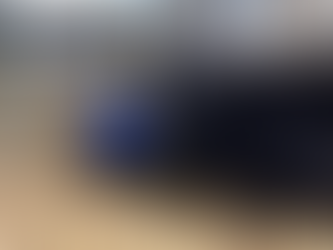A herding instinct
- Crone

- Apr 10, 2023
- 3 min read
A day at Lilbourne with Jane, Dan and Garry, to learn about sheep.
Lilbourne is interesting as it is a site created as compentation for a large warehousing and storage area nearby. It is quite large and includes pasture, wetlands and bunds planted with various trees and shrubs. Had the conservation team been in charge, I think they'd have allowed the land to regenerate naturally rather than planting and, if planting, might have chosen to do it raher differently. As it is, the site's a work in progress.
It's also the base for Jane's flocks.
As Lilbourne's fields are wet, Jane lambs in the large barns. She separates the sheep into those scanned as bearing singles and those scanned with twins or triplets (and one with quads) to ensure they get the right feed.
Ideally, once they have lambed, the new families go in individual enclosures to bond securely, as the pens don't offer the space a ewe would choose in the fields.

This lovely photo was taken by Garry Smith - as were the ones that include me!
When a ewe fails to produce milk or doesn't have enough milk to feed the full complement of her offspring, Jane fosters them onto another ewe. It doesn't always work as ewes may reject fostered lambs, but most of the time you can work through that. As soon as the lamb smells sufficiently like the foster mother, she will tend to accept him.
Something Jane mentioned was really fascinating. She said that if a ewe is hesitating to accept a foster lamb, bring in the sheep dog. The ewe will stand firm to protect the youngster and that can be enough to get her to bond. Likewise, in the field, when ewes and lambs have got separated, the presence of the dog can quickly lead them to find each other again.
This year Jane has five bucket lambs. One, a little ewe-lamb called Bucket, was the runt of the quads and at first could not stand up. Jane took her home each night so she could bottle feed her and now Bucket is up and running!
Even better, she can now feed herself from the... bucket.
Jane showed us how to castrate, dock tails and tag ears. This was hard for vegan, never-hurt-a-sentient-being me. I didn't want to express anything akin to disapproval as I am not disapproving in the slightest. While there are domestic animals, they could not be better or more compassionately cared for under existing regulations than by Jane. But inflicting pain is really hard. It has to be done - but it has to be done due to the regulations and because we have domestic sheep. It's one of those occasions when you have to cut off the sense of connection... but not entirely, because you also have to do the job as swiftly and calmly as possible to limit the stress to the animal. A very interesting balance.
When Jane does it, you can almost feel the way she is making it as painless as possible - by being swift, efficient and focused.
Tail docking prevents flies laying eggs in the tails, which would be worse than having an intact tail, one assumes. The ear tags mark the lamb with a number and an electronic chip.
The slightly older lambs (once "processed") were turned out with their mothers.
Gamboling already!
The numbers - lambs bear the same number as their mother - allow Jane to see at once which lambs belong to which ewe. This helps her ensure that everyone is where they belong.
She is incredibly organised and utterly dedicated. I'd love to visit again and catch up with Bucket and the rest.



















Loved learning about your day with the lambs!